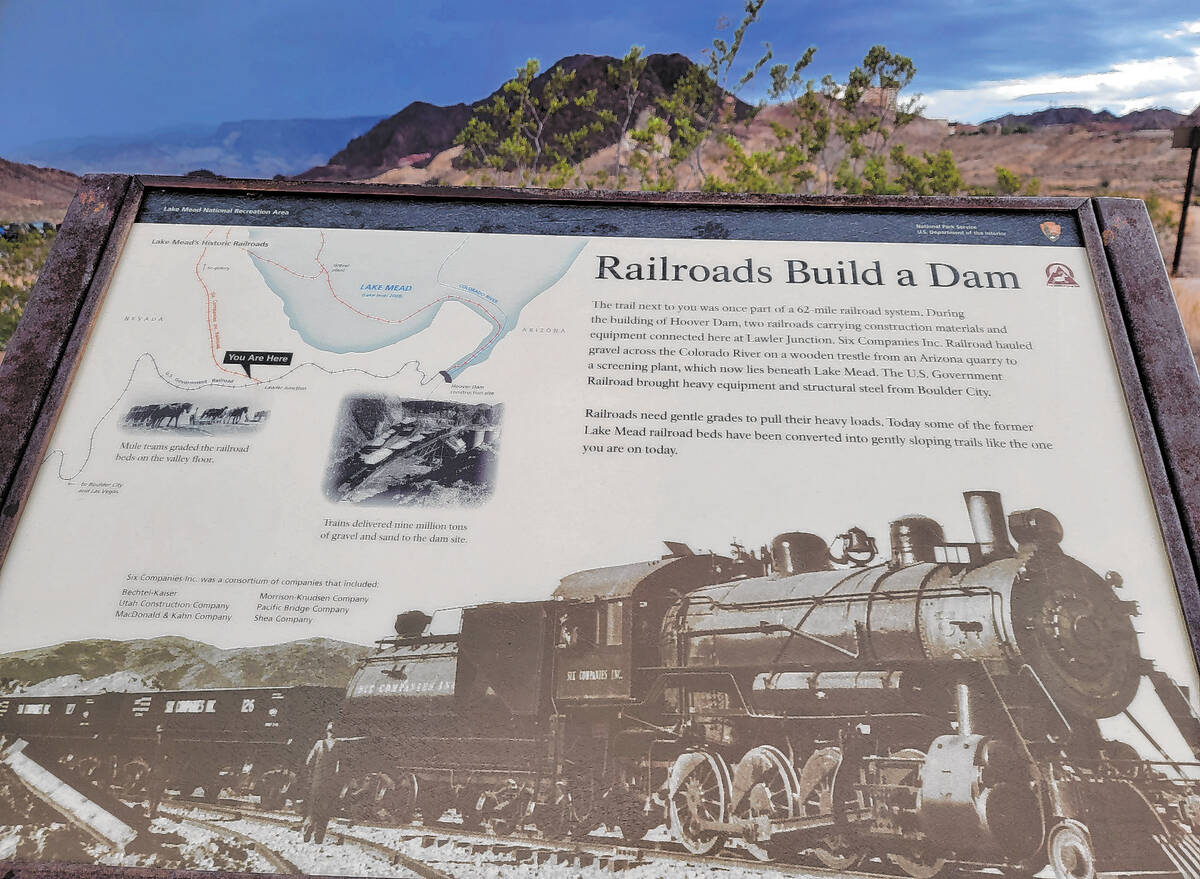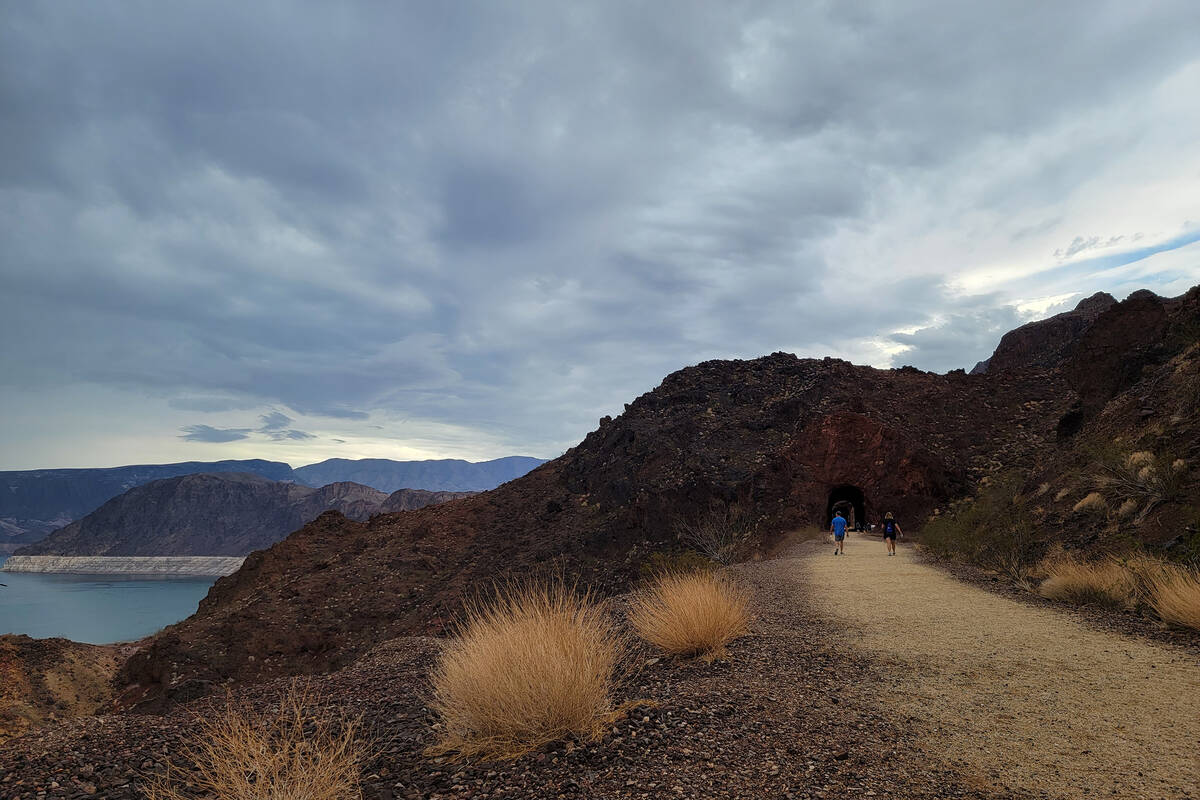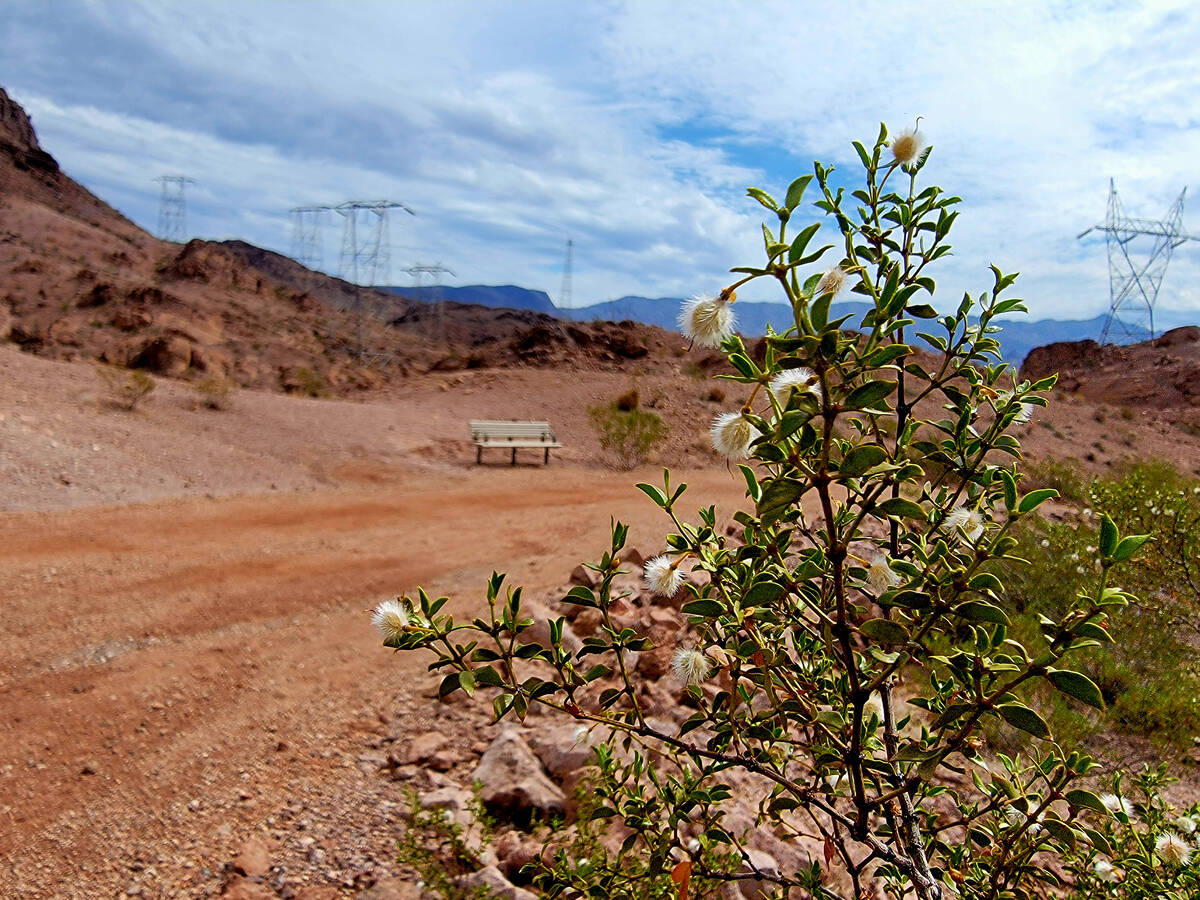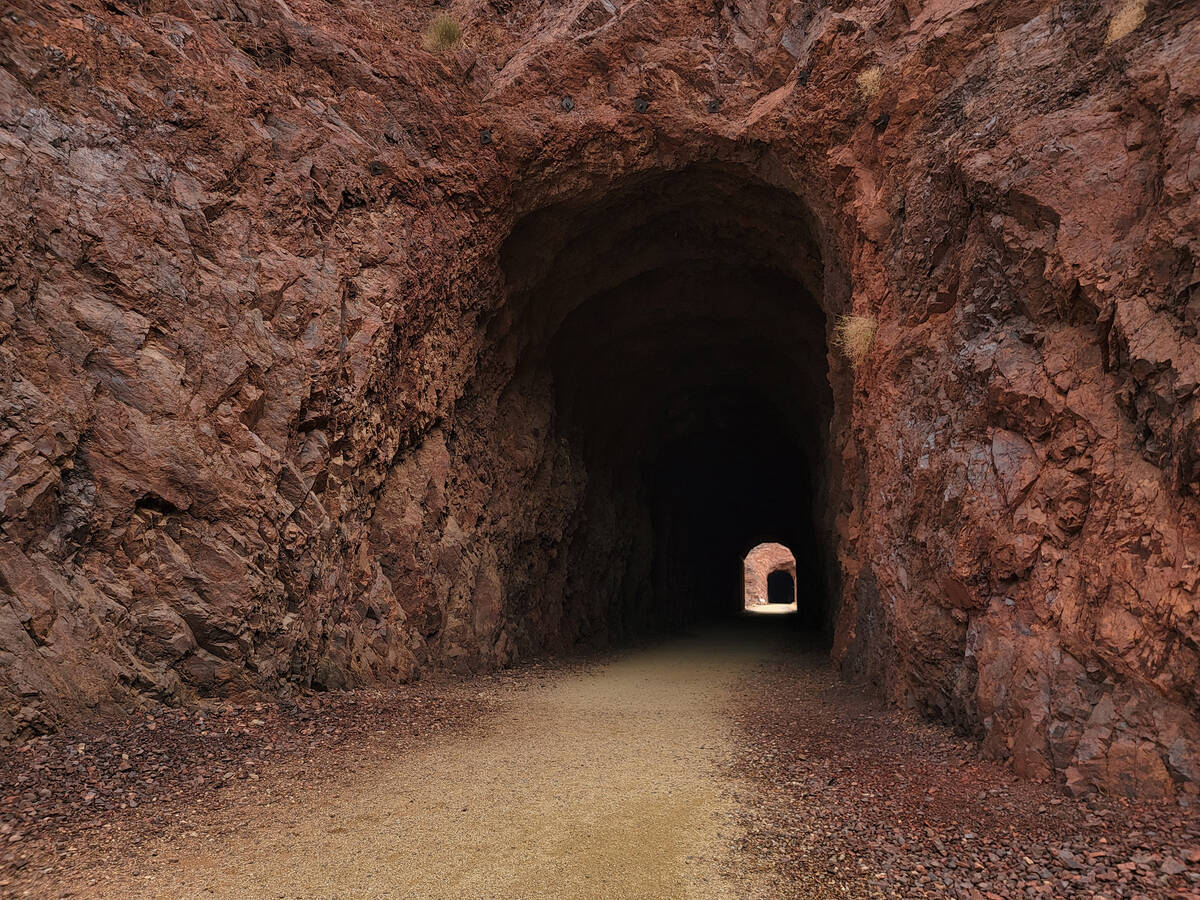Trail provides glimpse into dam’s history
A trail passes through tunnels of Lake Mead history and hints at the challenges of taming a once-wild Colorado River to harness its water and power. The mostly flat Historic Railroad Trail allows walkers and bicyclists to travel back to the early 1930s on a path where tracks once guided trains hauling materials and critical components for Hoover Dam’s construction.
Eighty-six years after the dam was completed, hikers can follow history through five tunnels wide and tall enough to fit trains that carried bulky construction equipment. Trains ran 24 hours a day during much of the five years needed to spin an ambitious plan into an engineering marvel. The trail leads all the way to Hoover Dam, but many visitors choose to hike through the tunnels and then turn around near a Depression-era construction yard for a total of five hiking miles.
The train tracks are gone now, but plenty of construction remnants, panoramic views of the largest man-made lake in the U.S., informative history-sharing panels, your imagination and the tunnels themselves combine to help tell the stories of the origin of Lake Mead and Hoover Dam.
On the trail of history
The Historic Railroad Trail, an easy hike that is ideal for fall days, begins near a parking lot close to the Alan Bible Visitor Center just outside the Lake Mead National Recreation Area entrance closest to Boulder City. Once on the trail, hikers and bicyclists reach the first tunnel after a little more than a mile on a wide path through desert and rockscape dotted with creosote bushes and other desert-hardy plants.
The first tunnel is quickly followed by three more, all about 300 feet in length and 27 feet tall, cut by humans and jackhammers through volcanic rock along a ridge that at times has unforgiving drop-offs. The fifth tunnel is just past the trail’s 2-mile mark and precedes a gate that closes at sunset but in daylight leads to a heavy equipment yard, bathrooms and a covered picnic table. Just past the construction yard, where steel once was crafted into 30-foot-diameter Hoover Dam penstock sections, is a hillside covered with beavertail cactus that delicately bloom fuchsia in spring.
Additional time on the Historic Railroad Trail leads to the dam visitor center parking garage and toward the Mike O’Callaghan-Pat Tillman Memorial Bridge, where visitors get impressive views of the Lower Colorado River, Black Canyon and Hoover Dam. Going the extra distance turns the round-trip total into about eight miles.
Whether the goal is simply to walk through the five tunnels and turn around or to continue all the way to the dam before traveling back to the trailhead’s parking lot, walkers and bicyclists can expect a brief time in the Mojave Desert at the trail’s start before stepping onto the wide packed-dirt path left behind by standard-gauge railroad tracks laid for Hoover Dam’s construction. Trains played a pivotal role in the project and delivered 9 million tons of gravel and sand to the site, along with other essential building materials and machinery supporting the construction of the dam and companion power plant.
From 1939 to 1949, Hoover Powerplant was the world’s largest hydroelectric power installation and to this day remains a significant power producer. Super-sized sections of turbines, generators and other equipment were transported by train in the 1930s through the tunnels that walkers now visit.
The Historic Railroad Trail is the only remaining section of the Depression-era rail line running from Boulder City to the dam that wasn’t covered by Lake Mead’s water or displaced by development.
At the exit of the second tunnel, an information panel encourages visitors to look out at Lake Mead. Imagine, the sign suggests, that it’s the early 1930s, when thousands of men flocked to the Hoover Dam project to get hard-to-come-by work during the Great Depression. Their families would sometimes follow them to the scorching Mojave Desert, and they would set up tents and create homes with available plywood, cardboard, canvas, scrap metal and wood in an area dubbed Ragtown. Families carried water to their dwellings from the nearby Colorado River in the Ragtown area, which is currently submerged in dammed river water.
Bats, blooms and benches
The third tunnel is a home of a different kind. From May through early October, hundreds of Mexican free-tailed bats take up residency there, where they can be seen and heard by hikers passing through.
Other animals seen during warmer months in the area include chuckwalla lizards and an occasional rattlesnake. Ravens, black-throated sparrows and an incidental osprey can also be seen. Sightings of desert bighorn sheep, usually up high on rocky hilltops, are a lucky find but always a possibility in this area of Lake Mead. Bright yellow brittlebush flowers are seen throughout many months of the year, but spring brings colorful blooms from globe mallows, scorpionweed, beavertail cactus, rock nettles and, in a good year, the elegant desert five-spot along the side trail leading up to Hoover Dam Lodge from the Historic Railroad Trail.
Several benches are on standby along the path for passersby needing a rest.
The fourth and fifth tunnels give hikers and bicyclists an opportunity to admire the construction of and appreciate visitor access to the tunnels, a symbol of the massive scale of the Hoover Dam project. The Historic Railroad Trail and the work done to maintain and refurbish its tunnels are courtesy of a partnership between Lake Mead National Recreation Area, overseen by the National Park Service, and the Bureau of Reclamation, which operates Hoover Dam.
After a first visit to the Historic Railroad Trail, hikers and bicyclists won’t have a complete understanding of the complicated engineering and construction of Hoover Dam and its power plant along with the creation of the largest man-made reservoir in the U.S., but they will have added knowledge and extra admiration for those historic accomplishments.
























